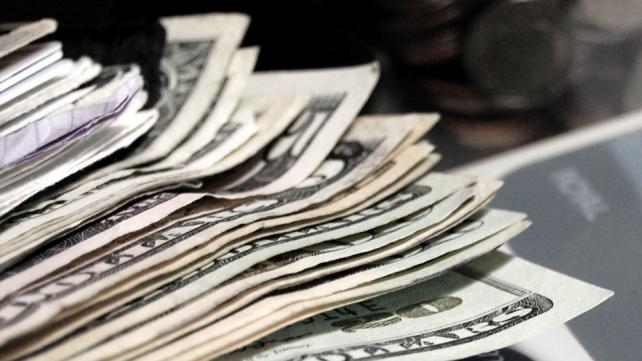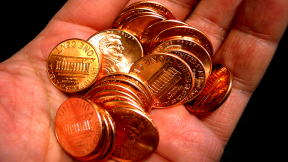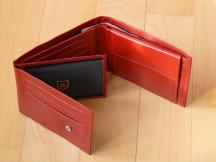
Creating a personal financial plan should be simple enough so that a second grader, who knows addition, subtraction, multiplication and division, can understand it. It doesn't have to be a jungle of incomprehensible figures. Using a one-person example, here's a sample guide that can help:
Jameel is a single Muslim brother, with no one to support but himself and his heavy credit card debts. He wants to clean up the mess he has gotten himself into without losing the essentials.
1. Calculate what you've got
The first thing he does is calculate exactly how much money he makes on a monthly basis. In his case, Alhamdolillah, he makes about $20,000 (after taxes) yearly. He has no other income or money coming from any other source.
By dividing by 12, he gets his monthly salary: $1,666.66.
He also uses this principle to divide up any costs he may have had had over a yearly period, just so that everything works on a monthly basis.
2. Decide what you HAVE to pay to survive
He decides to make a list of those things, every month, that he absolutely needs to survive In doing this, he comes up with the following categories:
- Rent/payment
- Grocery
- Clothing
- Bills for heat and electricity
- Car maintenance/payment/gas
3. Decide how much this costs monthly
Some of the things are already set like rent. But most everything else fluctuates monthly. However, this fluctuation is not so much.
This is why Jameel decides, one month, to note down EVERY expense for ANYTHING he bought (even small items). This gave him a pretty clear idea of how much he spends in the categories above.
He also digs up old bills for a period of a couple of months for things like heating and electricity and calculates the average but adds a little to cover times when it may be more than usual. Now he fills in these categories.
1. Rent........$600
2. Food.......$100
3. Clothing...$100
4. Bills........$200
5. Car.........$100
_________________
Total.........$1100
Now Jameel knows that every month, he must set aside $1300 for basics. He doesn't even have to use the credit card, since he knows this is how much he will need.
4. Determine and calculate your non-essentials
Jameel lists the non-essentials-things that he spends on that aren't as necessary:
- recreation-this includes trips to restaurants, video rental or purchases, etc.
- gifts-weddings, Eid gifts, etc.
- long-distance calls (to mom and dad-back in New York)
He thinks about his latest trips to restaurants and decides to start eating more at home, perhaps picking up some cooking skills by trial and error, to cut down his restaurant eating costs.
For gifts, he decides to allocate a small amount every month so when necessary, there will be enough for it.
He does some calling and gets a good deal and reduces his long-distance bill by paying a flat rate for a certain number of hours every month.
So the picture stands:
For non-essentials, Jameel spends this amount:
$50-for recreation
$50-for gifts
$50-for his long-distance calls
_____________________
$150 for non-essentials.
So the total so far is at :
Monthly salary.....$1666.66
Essentials......... -$1100.00
Non-essentials.....-$150.00
_________________________
Total.................$416.00
5. Establish categories for Debt elimination, Sadaqa and savings.
Since Jameel is serious about giving Sadaqa, eliminating his debt and wants to have some savings as well, he decides that these are categories that have to be included as well.
After fiddling around a bit, he decides on the following numbers:
Savings.....$100.00
Charity........$25.00
Debt..........$100.00
A sample financial sheet for Jameel now, that includes all of his categories are
INCOME-WHAT JAMEEL MAKES MONTHLY
How much money is coming in monthly $1666.66
NECESSARY EXPENSES-WHAT JAMEEL MUST SPEND MONTHLY
1. How much money is spent on essentials
a. rent...................$600.00
b. food..................$100.00
c. clothing..............$100.00
d. car....................$100.00
e. bills...................$300.00
f. Sadaqa.................$25.00
g. Debt elimination....$100.00
h. Savings..............$ 100.00
__________________________
Total....................$1425.00
EXTRA STUFF JAMEEL HAS TO SPEND ON
2. How much money is spent on non-essentials $ 150.00
a. recreation
b. gifts
c. telephone calls (long-distance)
TOTALS
Total monthly income $1666.66
MINUS
Total expenditure ($1425.00+$ 150.00=$1575.00)
_____________________________________________________________
LEFT OVER $91.66
Some Things to Remember
- Numbers are flexible. Experiment with getting cheaper options for things, even for essentials. If, for instance your rent is very high, consider moving. If you can, reduce your clothing bill to only what you really, really need. Be on the lookout for ways, especially, that you can increase the proportions of money you put in for debts, savings and Sadaqa.
- Don't spend unless you have it (so you can avoid interest and unnecessary borrowing).
- Write down every expenditure. Keep receipts of all purchases.
- Deal with averages.
- Plan for extras
- Plan for emergencies








Comments
It has really helped me to plan my budget. I really think of saving and cutting unnecessary expenses.
Location
I ARE NINJA
Location
Stop blowin up America damnit! And stop calling trent squirrel boy!
Location
Stop calling me squirrel boy! And stop doing my mom you knee grow
Location
You have provided a basic yet detailed enough guideline for me to teach my niece how to make her first budget for college. Thank you.
Location
Add new comment